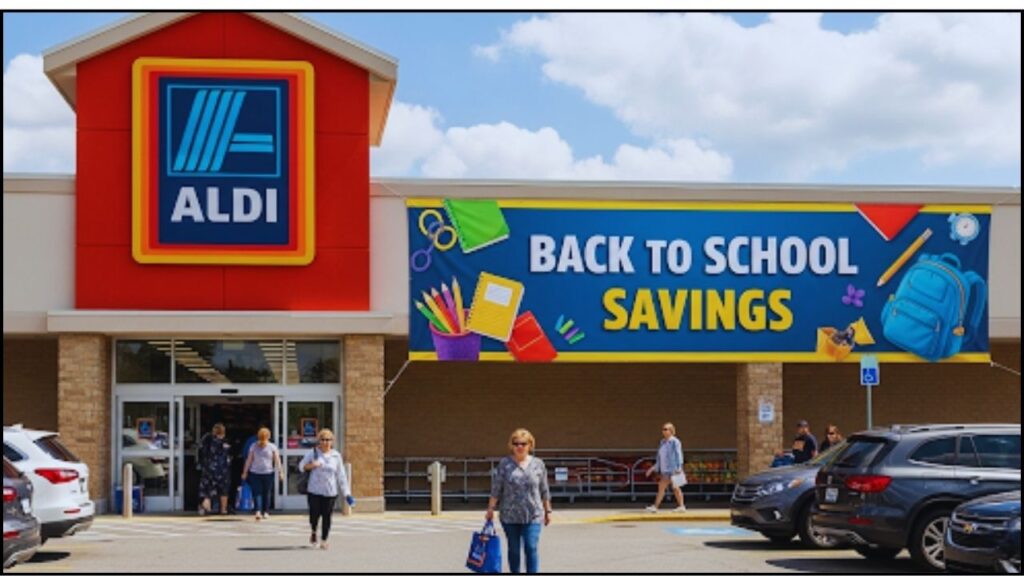As American families navigate persistent economic pressures, new data reveals significant shifts in back-to-school spending trends, with discount retailers like Aldi capturing a growing market share from traditional big-box stores. This trend highlights a broader consumer pivot towards value-driven purchasing for everything from notebooks to lunchbox snacks, reshaping the competitive landscape of the $40 billion back-to-school retail season.

Economic Pressures Reshape a Crucial Retail Season
The annual back-to-school shopping season, long dominated by giants like Walmart, Target, and Staples, is experiencing a notable disruption. Driven by more than two years of elevated consumer prices, shoppers are increasingly prioritizing cost savings, a behavioral shift that has directly benefited discount chains. A recent report from the National Retail Federation (NRF) projects that while total spending per family is expected to remain high, a larger portion of that budget is being allocated to retailers known for aggressive pricing.
“Consumers are demonstrating remarkable resilience, but they are also making calculated trade-offs,” said Dr. Katherine Cullen, a senior director of industry and consumer insights at the NRF. “They are telling us they will spend what is necessary for their children’s education, but they are hunting for value more than ever before. This opens the door for grocers and discount-format stores that previously held only a marginal share of this market.”
This year, families with children in elementary through high school are expected to spend an average of $890 on school items, a figure consistent with last year’s record spending, according to NRF projections. However, the composition of that spending is changing, with less emphasis on high-ticket electronics and more focus on core supplies and apparel, categories where discount retailers excel.
Aldi’s Strategy and Market Impact
German-owned Aldi, known for its no-frills shopping experience and private-label-centric model, has strategically expanded its seasonal “Aldi Finds” section to include a wider array of school supplies. Items like backpacks, lunch bags, notebooks, and stationery are now featured prominently alongside groceries, creating a one-stop-shop appeal for time-pressed and budget-conscious parents. This strategy appears to be paying off, according to market analysts.
“Aldi’s business model is uniquely suited for the current economic environment,” explained Neil Saunders, Managing Director of retail analysis firm Global Data. “By limiting inventory to a curated selection of high-turnover products and relying on house brands, they can maintain price points that are often 30-40% lower than national brands at traditional retailers. For a family buying for multiple children, that consumer savings is substantial.”
This competitive pressure is forcing larger retailers to recalibrate their own strategies. Both Walmart and Target have increased their focus on private-label school supply lines, such as Pen+Gear and Mondo Llama, and have been more aggressive in their promotional pricing to defend their market share.
Beyond Price: Convenience and Consumer Perception
While price is the primary driver, convenience is also a significant factor. The ability to purchase school supplies during a routine grocery trip saves time and streamlines the shopping process for busy households. This consolidation of shopping trips is a key part of Aldi’s value proposition. Consumer advocacy groups note that the shift is a logical response to household budget constraints. “When a family’s grocery bill has increased by 20% over two years, they look for savings everywhere else,” said Anna Laitin, director of financial policy at Consumer Reports. “If they can save $50 on school supplies by buying them where they buy their food, that’s a rational and powerful incentive. It’s a clear indicator of where consumer priorities lie right now.”
However, this trend is not without trade-offs for shoppers. Discount chains typically offer a much narrower selection of products compared to office supply superstores or mass merchandisers. Shoppers seeking specific brands or a wide variety of colors and styles may still need to visit traditional retailers, though many appear willing to sacrifice choice for savings on basic items.
As the retail sector heads into the critical holiday season, the performance of chains like Aldi during the back-to-school rush will be closely watched. It serves as a key barometer of consumer health and a potential harbinger of continued market share shifts if economic unease persists. The ability of traditional retailers to adapt to this value-focused environment will likely define their success for the remainder of the year.
